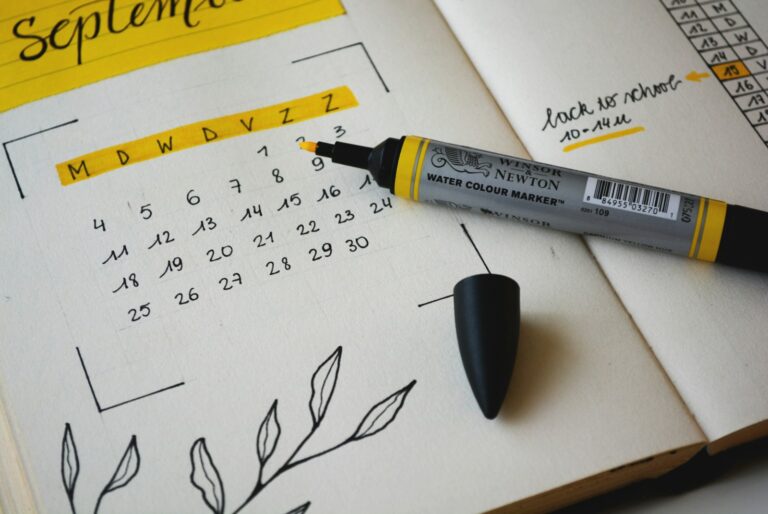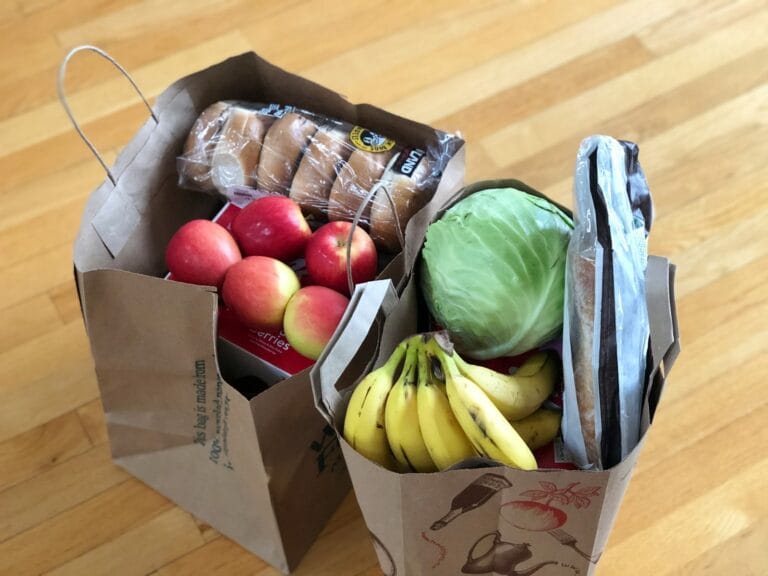Ever feel like your daily routine is more of a cage than a helpful guide? You’re not alone—plenty of us drop routines because they’re too strict or just don’t fit real life. A good daily routine gives you structure and flow, but it also bends with your needs.
To build a routine that actually works, start with your goals. What do you want to get done each day? Figure out what matters most before you start filling up your calendar. Think about both your day-to-day tasks and those bigger, long-term goals—like getting fitter or keeping stress in check.
Instead of mapping out every minute, try using flexible time blocks. This way, your day has a backbone, but you’re not boxed in. Maybe you have a “morning block” for key tasks and an “evening wind-down” slot. When life throws a curveball, you can shuffle things around instead of ditching your plans altogether.
Essential Elements of a Flowing Daily Routine
A solid daily routine strikes a balance between structure and wiggle room. It works with your natural energy, supports your well-being, and leaves space for surprises.
Understanding Structure and Flexibility
Structure gives your day some shape, but too much of it? That’s a fast track to burnout. The trick is to find a balance. If your routine can’t flex when your energy dips, it’s just going to get abandoned.
Think of your routine more like a rhythm than a set of rules. Anchor a few core activities—maybe morning meditation or a quick planning session at night—but let the rest float a little.
You might want to:
- Block time for types of activities, not specific chores
- Leave buffer zones between things
- Have a backup plan for low-energy days
- Check in and tweak your routine each week
Flexibility isn’t about chaos—it’s smart structure that knows when to give.
Identifying Energy Cycles
Your energy goes up and down during the day. It’s not a straight line, so why force your routine to be? Notice when you feel sharp, creative, or just plain tired.
Try tracking your energy for a week:
- When do you focus best?
- When does creativity come easiest?
- When do you usually hit a slump?
Line up your tasks with your energy. Do the heavy stuff when you’re sharp, and save lighter things for your slower hours.
Most folks hit a mid-afternoon dip. Instead of reaching for more coffee, plan a break or tackle something easy. It just feels better to work with your body, not against it.
Building Healthy Habits
Routines that last include habits that support your mind and body. A steady morning routine can set the right tone for the whole day.
Start tiny and link new habits to things you already do:
- Stretch for five minutes after brushing your teeth
- Drink water before your coffee
- Take three deep breaths before checking email
Habit stacking makes new behaviors stick by chaining them together. As you get used to them, you can build up.
Don’t forget to mix in downtime. Routines cut down decision fatigue and bring stability only if you give yourself regular breaks.
Practical Strategies to Design Your Day
A daily routine that works is a blend of structure and flexibility. Here are a few ways to shape your day so it helps you reach your goals but still rolls with life’s punches.
Defining Your Goals and Priorities
First, jot down what’s most important to you. What do you want to achieve today, this week, or this month? Your daily tasks should tie back to these bigger aims.
Try keeping your daily to-do list short—just 3-5 important things. The MITs (Most Important Tasks) method can help: pick out the tasks that really move the needle.
A planner can help you see everything at a glance.
Be specific with your goals. Instead of “exercise more,” write “walk 20 minutes after lunch.” It’s just easier to follow.
Time Blocking for Productivity
Time blocking is about giving certain hours to certain activities. It helps you give your day some shape and keeps you from drifting.
Sample Time Block Schedule:
- 7-8 AM: Morning routine
- 8-10 AM: Deep work on a priority project
- 10-10:15 AM: Quick break
- 10:15-12 PM: Meetings/calls
- 12-1 PM: Lunch and a walk
Be honest about how long things really take. Most of us underestimate, so add about 25% extra time for each task.
Keep your blocks loose. If you finish early, move on. If something takes longer, shuffle the rest instead of stressing.
Balancing Non-Negotiables and Recovery
Non-negotiables are the things you do no matter what—exercise, family time, work deadlines. Figure out your must-dos and schedule them first.
Recovery time is just as important. Build in breaks between focused work:
- 5-minute stretch
- 15-minute walk
- 10 minutes of meditation
Notice your energy levels. Do tough stuff when you’re most alert, and save easy tasks for your tired times.
Before you build a new routine, review your current day to see where your time really goes.
Maintaining Consistency Without Rigidity
You want a routine that sticks but doesn’t get stale or brittle. The right balance means your routine keeps you grounded but doesn’t box you in.
Incorporating Self-Care and Mindfulness
Self-care isn’t just a treat—it’s essential. Treat your routine as a guideline, not a strict rulebook. Leave some space between activities so you don’t burn out.
Try these mindfulness ideas:
- 5-minute meditation in the morning
- Deep breaths when switching tasks
- Quick gratitude check before bed
Even these tiny practices can lower stress and boost your mood. Notice how your energy shifts and adjust your self-care as you go.
Consistency in habits is what really supports your health. Don’t aim for perfection—just get back on track when life knocks you off.
Managing Distractions and Procrastination
Distractions can wreck any routine. Figure out your usual culprits and make a plan.
Some ideas:
- Work in 25-minute focus bursts
- Silence notifications during deep work
- Set up a workspace with as little clutter as possible
To beat procrastination, chop big tasks into smaller pieces. Pay attention to your natural rhythms when scheduling tough tasks.
This makes your day smoother—you’re not always deciding what’s next, because you’ve already mapped it out.
A flow-friendly routine isn’t about nailing a perfect schedule. It’s about having rhythms you can return to, even after a messy day.
Adapting Routines for Long-Term Success
A routine that sticks is one that grows with you. Life changes, and your routine should too.
Reviewing and Reflecting on Your Progress
Set aside a little time each week to check in. What’s working? What’s not? This quick reflection can save you a lot of frustration down the road.
Maybe keep a simple journal—just a few notes on what felt good or what was tough each day. Over time, you’ll spot patterns.
Ask yourself:
- Did I get my key tasks done?
- How did my energy feel?
- Which habits actually made me happier?
- What tripped me up?
Track your progress with a habit tracker or a basic chart. Seeing your streaks can be surprisingly motivating.
Adjusting to Life Changes and Challenges
Life doesn’t stay the same for long. New jobs, relationships, moves, or health stuff all mean you’ll need to tweak your routine. That’s not failing—it’s adapting.
When life gets wild, don’t try to keep everything going. Stick to your core habits (like sleep and basic self-care) and let the rest go for a bit.
You can make different versions of your routine for different situations:
- A bare-bones “stress mode” for busy stretches
- A “recovery” routine for sick days
- A “travel” version to keep you grounded on the road
Protect your work-life balance by having boundaries that flex, but don’t snap. Maybe you use a shutdown ritual to mark the end of work.
Sometimes, growing as a person means letting go of routines that aren’t serving you anymore—even if they used to work.
Frequently Asked Questions
Got questions about building a daily routine that flows with your life but still keeps you on track? Here are some answers.
What are the key elements in creating a balanced daily schedule?
You need both anchors and flexible blocks. Start with your non-negotiables—work hours, school runs, meetings.
Add in self-care like sleep, meals, and exercise. These keep your energy and mood steady.
Leave buffer time between activities so you’re not rushing. This helps you handle delays without stress.
Match your most important work to your peak energy times. Save easier stuff for your slower hours.
How can one incorporate flexibility into a daily routine without losing structure?
Set up choice points where you pick from a couple of pre-planned options based on how you feel.
Use time blocks like “morning work block” instead of pinning down exact times.
Give yourself different routines for weekdays and weekends, but keep your main habits steady. This helps you stay flexible.
Have backup plans for common hiccups. That way, you can adjust without scrapping your whole routine.
What strategies assist in making a daily schedule more effective?
Batch similar tasks—emails, calls, creative work—so you’re not constantly switching gears.
Try the 1-3-5 rule: one big thing, three medium things, and five small things per day.
Set clear start and stop times for your day. A regular wake-up and wind-down helps your brain know when it’s time to work or rest.
Check in weekly and tweak what’s not working. Tiny adjustments add up.
How should one go about recording and tracking their daily tasks efficiently?
Pick one system you actually like using—an app, a calendar, or just a notebook.
Write tasks as clear, doable actions. “Draft proposal outline” beats “work on proposal” every time.
Estimate how long tasks will take so you don’t overload yourself.
Color-code or tag tasks by project, energy level, or priority. It makes picking your next task way easier.
Why do some people struggle with maintaining a routine, and how can they overcome this?
Most folks start with routines that are too big or too strict. Start with a super simple routine—just 2 or 3 habits—before adding more.
Perfectionism is a killer. If you miss a day, just get back to it. Consistency beats perfection every time.
If your routine feels like a chore, it might not match your real values. Build around what actually matters to you.
Finally, don’t fight your personality. Work with your natural tendencies, not against them.
What are some ways to adapt your work routine for greater flexibility?
Try the “main task, bonus task” trick. Just pick one thing you absolutely have to get done, then add a couple of nice-to-have extras if you find the time or energy.
You might want to set up themed days—like, one day for deep work, another for meetings. It gives you some structure but still keeps things interesting.
Ever heard of the “bookend method”? You set up steady routines for your mornings and evenings, but let your midday hours stay pretty loose. That way, you can roll with whatever comes up.
And honestly, don’t forget to pause now and then to see how your routine’s working out. Flexibility isn’t a one-and-done thing; it really needs ongoing adjustment as your life changes.




